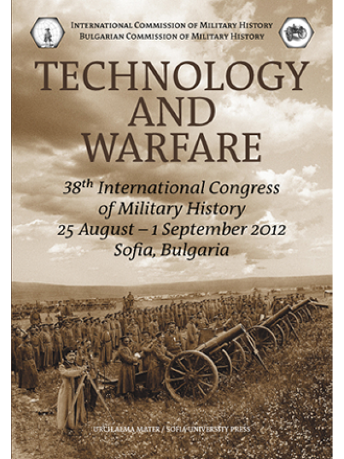« L’artillerie légère en campagne au long du XVIIIe siècle : nouvelles réflexions »
Résumé de l’article en français au bas de la présente page // Abstract of the article in English below
Article publié dans :
Technology and Warfare. 38th International Congress of Military History, 25 August - 1 September 2012, Sofia, Bulgaria. Sofia University Press, 2013, p. 83-93.

Résumé introductif en français :
L’article approfondit la place de l’artillerie légère dans la pensée militaire et dans les campagnes militaires tout au long du XVIIIe siècle ; il élargit la question traitée dans un autre de nos articles (Carnet de la Sabretache, juin 2001) en l’étendant à la bataille, et en étudiant, outre l’exemple français, celui de la Prusse. Le thème de l’artillerie légère au XVIIIe siècle est en effet important, parce que ce qui a marqué alors l’Europe en matière d’artillerie est, d’une part, la recherche de l’allégement des systèmes d’artillerie en général ; d’autre part, l’apparition, dans plusieurs pays d’Europe, de pièces très légères, non plus seulement par le calibre des pièces (ie le poids du boulet tiré), mais par la masse même des pièces. Après avoir défini ce que l’on entendait à l’époque sous l’expression d’« artillerie légère », l’article développe les raisons et les conditions de l’emploi de l’artillerie légère : augmentation de la capacité de manœuvre dans la « grande » guerre, préservation de l’effet de surprise dans la « petite guerre ». Si la France fut pionnière en Europe par la réflexion théorique sur l’emploi de l’artillerie légère, notamment à la petite guerre, d’autres pays, Autriche, Prusse, Saxe, précédèrent la France dans l’usage de cette artillerie sur le terrain. Les modalités d’emploi de l’artillerie légère dans la bataille sont abordées à travers les exemples de Fontenoy et de la pensée du roi Frédéric II de Prusse. L’article rappelle enfin les autres circonstances d’emploi de l’artillerie légère au cours d’une campagne militaire.
Abstract in English :
"Light artillery in the field during the 18th century: new reflections"
This article describes in depth the place of light artillery in military thinking and in military campaigns throughout the 18th century; it widens the question dealt with another article of ours (Carnet de la Sabretache, June 2001) by extending it to the battle, and by studying the Prussian example besides the French one. Light artillery in the 18th century is indeed an important topic, since what then left a mark in Europe regarding artillery was, on one hand, the search for weight reduction of artillery systems in general; and on the other hand, the appearance in several European countries of very light artillery pieces, not only due to their calibre (ie the weight of the cannonball), but with the mass of the pieces themselves. After having defined what was understood at that time with the expression "light artillery", the article develops the reasons and the conditions of the use of light artillery: an increase of manoeuvre capabilities for regular warfare, and a preservation of the surprise effect in the "petite guerre". While France was pioneer in Europe for the theoretical reflection about the use of light artillery, especially for the "petite guerre", other nations like Austria, Prussia and Saxony did use this artillery in the field earlier than France. The operational use of light artillery in battle is described through the examples of Fontenoy and the thought of King Frederick II of Prussia. The article reminds also about the other circumstances for the use of light artillery during a military campaign.